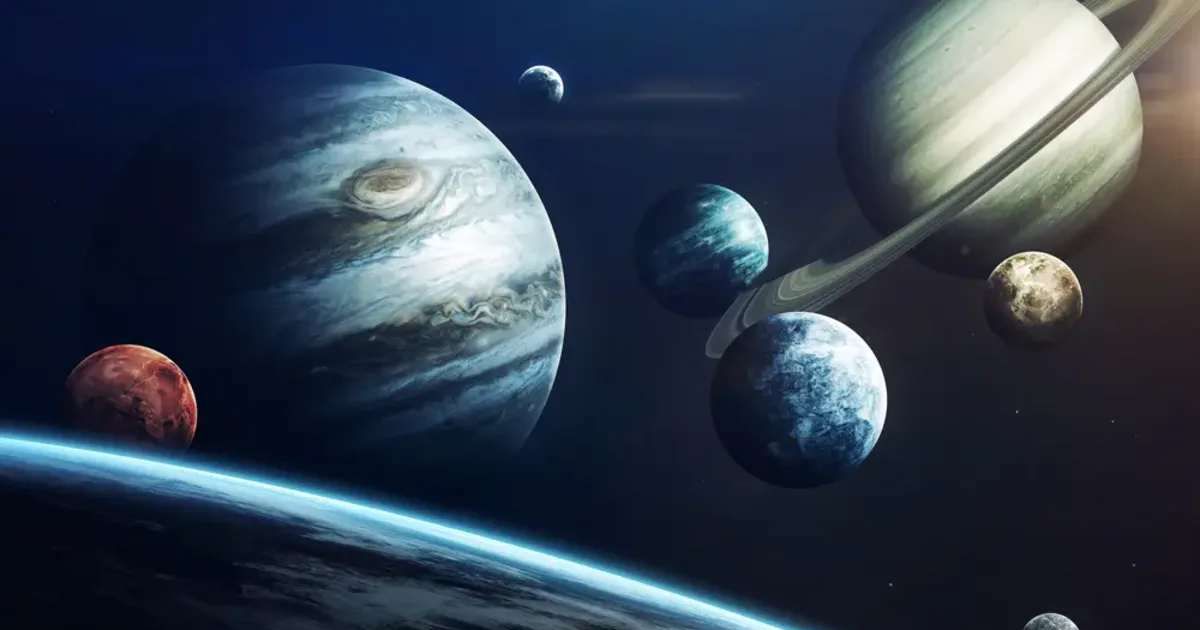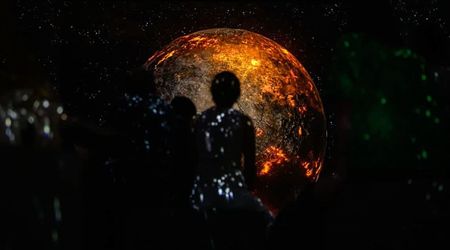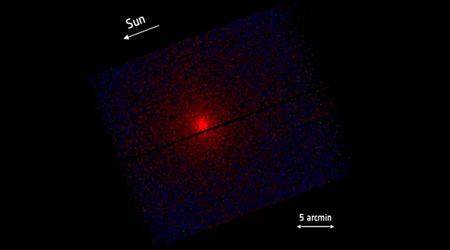What are the differences between the inner and outer planets?


The planets of the solar system are divided into two groups: the inner planets and the outer planets. The inner planets are those closest to the sun: Mercury, Venus, Earth, and Mars. The outer planets are those farthest from the Sun: Jupiter, Saturn, Uranus, and Neptune.
You may wonder how different these planets are, so much so that scientists have had to separate them into two distinct groups. In this article, we'll take a closer look at what sets them apart.
Difference #1 Their distance from the Sun
The inner planets (also known as inferior planets) are those that lie between the Sun and the asteroid belt, they are Mercury, Venus, Earth, and Mars. They are also sometimes referred to as terrestrial planets because they have solid surfaces.
Outer planets (also known as superior planets) are those that lie beyond the asteroid belt, they are Jupiter, Saturn, Uranus, and Neptune. They are sometimes called gas, ice giants, or even Jovian planets because they are mainly made of gas and do not have a solid surface.
It is thought that the reason for this specific configuration is due to the way our solar system was formed. It is believed that the strong solar winds emanating from the young Sun pushed most of the lighter elements and gases outward and farther out in the solar system.
- Mercury – 36 million miles (58 million kilometers)
- Venus – 67 million miles (108 million kilometers)
- Earth – 92.96 million miles (149.60 million km)
- Mars – 142 million miles (228 million kilometers)
- Jupiter – 484 million miles (778 million kilometers)
- Saturn – 886 million miles (1.4 billion kilometers)
- Uranus – 1.8 billion miles (2.9 billion kilometers)
- Neptune – 2.8 billion miles (4.5 billion kilometers)

Difference #2 Their size
When discussing planets, size definitely matters. The inner planets are much smaller in size compared to the outer planets. Mercury is the smallest of all the planets with a diameter of just 3,031 miles. In contrast, Jupiter is the largest planet with a diameter of 88,846 miles.
The outer planets exert a much greater gravitational influence on the solar system due to their large size. It is thought that Jupiter's gravitational influence on meteorites and comets, effectively prevented them from colliding with the inner planets. It sometimes flings them out of the solar system, and sometimes it pulls them towards itself where they usually end up colliding with the planet and breaking apart. This is one of the reasons why Jupiter is nicknamed the "godfather of the solar system." Below is a list of each planet's diameter, from the largest to the smallest.
- Jupiter is first, with a diameter of 88,846 miles (142,800 km)
- Saturn is second, with a diameter of 74,900 miles (120,660 km)
- Uranus is third, with a diameter of 31,763 miles (51,118 km)
- Neptune is fourth, with a diameter of 30,779 miles (49,528 km)
- Earth is fifth, with a diameter of 7,926 miles (12,756 km)
- Venus is sixth, with a diameter of 7,521 miles (12,104 km)
- Mars is seventh, with a diameter of 4,222 miles (6787 km)
- Mercury is eighth, with a diameter of 3,031 miles (4879.4 km)

Difference #3 Their chemical composition
The third difference between inner and outer planets has to do with their chemical composition. The inner planets are made of rock and metal, while the outer planets are made of gas and ice. This difference is due to the distance from the Sun.
The closer a planet is to the Sun, the higher its temperatures will be. This means that any water present will be in the form of vapour and gas. Jupiter and Saturn are mainly made of hydrogen and helium, while Uranus and Neptune are made of methane, ammonia, and water.
Again, in the early days of the solar system, it is thought that the Sun's strong winds blew most of the lighter elements and gases outward. The inner planets are made of heavier materials because they were not affected as much by the solar winds.
Difference #4 Their surface temperature
The fourth difference between inner and outer planets is their temperature. The inner planets have higher temperatures because they are closer to the Sun. Mercury, the closest planet to the Sun, has an average surface temperature of 333 degrees Fahrenheit. In contrast, Neptune has an average surface temperature of -350 degrees Fahrenheit.
The outer planets are further away from the Sun, and as a result, they have much colder temperatures. The photons from the Sun take much longer to reach these planets, and as a result, they don't receive as much heat.
- Mercury - 333°F (167°C)
- Venus - 867°F (464°C)
- Earth - 59°F (15°C)
- Mars - Minus 85°F (-65°C)
- Jupiter - Minus 166°F (-110°C)
- Saturn - Minus 220°F (-140°C)
- Uranus - Minus 320°F (-195°C)
- Neptune - Minus 330°F (-200°C)

Difference #5 Their rotation period
The rotation period of a celestial object is the time it takes said object to complete a full revolution around its axis. For the 8 planets of our solar system, this indicates the length of their days.
- Mercury: 1,408 hours (58.6 days)
- Venus: 5,832 hours (243 days)
- Earth: 24 hours
- Mars: 25 hours
- Jupiter: 10 hours
- Saturn: 11 hours
- Uranus: 17 hours
- Neptune: 16 hours
So why do the outer planets spin faster than the inner planets? According to Chris Lintott, This is due to something called the conservation of angular momentum.
The conservation of angular momentum is a law of physics that states that the angular momentum of a system will remain constant unless an external force acts on the system.
When the gas giants formed, the enormous amount of already spinning gas and dust around the protoplanets coalesced down to create their atmosphere. In Jupiter's case, its atmosphere represents about 95% of its total mass. You can imagine the sheer force that was needed to pull all that mattered together. This force caused Jupiter to spin faster and faster as it accreted more material.
The inner planets, on the other hand, didn't have as much spinning gas and dust around them, to begin with, so their accretion led to a much slower spin.
Difference #6 Their orbital period
The orbital period of a planet is the time it takes to complete one full orbit around the Sun. Mercury, for example, has an orbital period of just 88 days. In contrast, Neptune has an orbital period of 165 years!
The reason for this difference is pretty simple. The inner planets are closer to the Sun, and as a result, they orbit the Sun much faster than the outer planets. The further away a planet is from the Sun, the longer it will take to complete one orbit.
- Mercury: 87.97 days (about 3 months)
- Venus: 224.70 days (about 7 months)
- Earth: 365.26 days (12 months)
- Mars: 686.98 days (about 2 years)
- Jupiter: 4,332.82 days (about 12 years)
- Saturn: 10,755.70 days (about 29.5 years)
- Uranus: 30,687.15 days (about 84 years)
- Neptune: 60,190.03 days (about 165 years)
Inner planets, specifically Mercury and Venus, cannot be at opposition in the same way outer planets can. Planetary opposition is a term used in astronomy to describe the position of a planet when it is directly opposite the Sun in the sky, as viewed from Earth. This means the Earth is directly between the Sun and the outer planet.
On the other hand, the Greatest elongation is a significant astronomical event for Mercury and Venus, marking the points in their orbits when they appear farthest from the Sun as viewed from Earth. This phenomenon is unique to these inner planets because their orbits lie inside that of Earth.
If you were to look at these planets with a telescope, you'd notice that they display phases, just like the Moon, as opposed to outer planets where you'd only ever see one fully illuminated side.

Difference #7 The number of moons they have
The inner and outer planets also differ in the number of moons they have. Mercury and Venus don't have any moons, while Earth has just one and Mars has two moons (for now). In the outer region of the solar system, Jupiter has a whopping 79 jovian moon! Saturn has 82 moons, Uranus has 27 moons, and Neptune has 14 moons.
The outer planets have more moons because their gravitational pull is much stronger than the terrestrial planets. As the solar system was forming, they were able to hold on to much more material, which slowly but surely, became moons.
Related article: How many moons does each planet have?

Difference #8 Their magnetic field
The magnetic fields of planets in our solar system vary significantly between the inner and outer members. Inner planets, such as Earth, possess relatively weaker magnetic fields, a consequence of their smaller sizes and different internal compositions.
In contrast, outer planets like Jupiter boast some of the strongest magnetic fields in the solar system, a result of their larger sizes and rapid rotation rates. These powerful fields are not only fascinating for scientists but also play a crucial role in shaping the space environment around these planets.
For instance, Jupiter's magnetic field is so strong that it extends far beyond its moons, creating a vast magnetosphere that influences a wide range of phenomena, from auroras to the behavior of charged particles.









